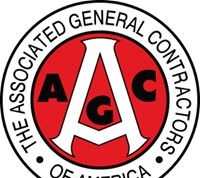Whether you are just buying a house or have been a homeowner for a long time, you have to contend with high home insurance premiums. But it doesn’t have to be this way! Below are some tips on decreasing your premium so that you get the best homeowners insurance.
- Increase your deductible
An easy way to reduce your premium is to increase your insurance deductible. Yes, increasing the deductible means you will be paying more when you make a claim, but it would significantly decrease your premium. If you do this, don’t forget to save enough money to be able to pay this amount if you do need to make a claim.
- Don’t confuse the purchase price with rebuilding costs
The price you paid for your home includes the value of the land. However, land isn’t at risk of fire, theft, storm, and all the other risks covered by your insurance policy. So why would you include its value in the amount to be insured for and pay a much higher premium? Instead find out how much it would cost to rebuild your house and use that as the basis for deciding how much to be covered. A lower coverage will get you a much lower premium. Beware of insurance companies trying to convince you that you need a much higher coverage.
- Make your home more secure anddisaster resistant
You can make improvements to your house that would reduce the odds of some disaster happening and thus insurance companies would offer you a better premium. Installing the basics, such as smoke detectors, burglar alarms, and deadbolt locks can earn you a 5% discount. Actively monitored fire and burglar alarms that call the police, fire or other monitoring stations, as well as an automatic sprinkler system could get you as much as a 15-20% reduction in your premium.
There are many other improvements you can make to your property but what would get you a lower premium varies from insurer to insurer. So do your own research and ask your insurance company. Keep in mind the upfront expenses you would have to incur in order to make the improvements and weigh that against the long-term savings and peace of mind. The most common examples are:
- Roof:The condition and age of your roof has a great impact on your premium. As your roof incurs wear and tear it should be repaired or replaced to prevent water damage.
- Electrical wiring:Older homes might have outdated aluminum or knob-and-tube wiring. If that’s the case, you should have a licensed electrician rewire it to the safer copper wiring.
- Plumbing:If you have old lead, galvanized steel or clay pipes, you should switch to copper, PVC or plastic pipes as these are far less prone to corrosion, buildup or leaks.
- Sewer backup valve:If you don’t have one, you risk a toxic and expensive mess in your basement.
- Sump pump:This is a pit under your basement that collects rain and flood water and then pumps it out into the sewers to avoid flooding your basement.
- Bundle your home and auto insurance
Insuring your home and car with the same company usually saves you anywhere from 5-15% on your premium. However make sure that this bundle price is lower than if you bought them separately from different companies.













